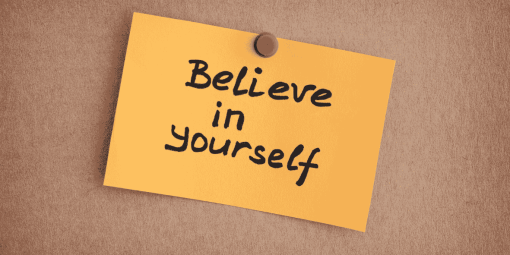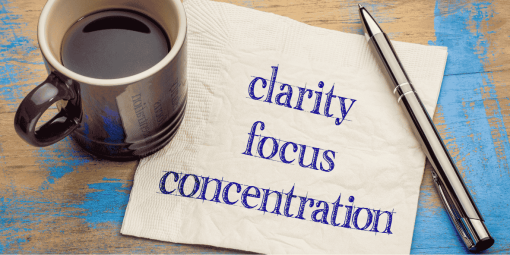Introduction
When peace fills a neighborhood, it becomes more than a location—it transforms into a sanctuary. A peaceful neighborhood nurtures trust, kindness, and mutual respect. It isn’t just about absence of conflict, but the presence of genuine goodwill and silent blessings passed from one home to another. Every smile exchanged on the street and every helping hand extended strengthens the foundation of communal peace. Peace in the neighborhood is the seed that blooms into harmony for future generations.
- Peace starts where people feel heard.
- Calm communities raise confident children.
- Respect is the first ingredient of peace.
- Good neighbors build peaceful streets.
- Small acts of kindness prevent big conflicts.
- Listening is more powerful than reacting.
- A kind tone can defuse anger.
- Safety grows where peace lives.
- Compassion keeps arguments away.
- Empathy creates unity in diversity.
- Understanding heals what judgment damages.
- Blessings grow when shared in silence.
Spreading Blessings Through Daily Actions
We don’t need to make grand gestures to bring peace into our neighborhoods. It begins with small, daily blessings: watering a neighbor’s plant, waving to children on their way to school, or offering a smile during the morning walk. These acts, though ordinary, carry the extraordinary power to create an environment of trust and serenity.
- Peace is in the little things.
- Quiet help speaks loud love.
- A friendly gesture changes the day.
- Simple blessings bring silent joy.
- Grace is shown in everyday kindness.
- Sharing time is sharing peace.
- Gratitude strengthens the heart of a community.
- Regular smiles build lasting bonds.
- Helpful hands hold peaceful hearts.
- Consistency in kindness earns trust.
- Daily compassion leads to lifelong connection.
- A peaceful home inspires a peaceful street.
Why Neighborhood Peace Matters for Everyone
Neighborhood peace isn’t just a nice idea—it’s a necessity. Where peace thrives, crime declines, children grow healthier, and elders feel safer. A peaceful environment doesn’t just protect people physically; it protects their emotional and mental well-being. When one home lives in tension, the whole block feels the weight. But when one home radiates peace, others are inspired to follow.
- Peaceful places promote healthy minds.
- Stress dissolves where neighbors support each other.
- Fear fades when streets are kind.
- Unity discourages violence.
- Safety becomes a habit in peaceful zones.
- Mental clarity grows in calm surroundings.
- Laughter lasts longer in trusted places.
- Hope stays alive where tension stays out.
- The youth grow wise in peaceful soil.
- Elders thrive where harmony is routine.
- Joy expands where conflict shrinks.
- Blessings multiply in peaceful presence.
Building Trust Among Neighbors
Trust is the backbone of any peaceful neighborhood. It takes time to build, but once rooted, it creates strong relationships that can withstand challenges. When people trust their neighbors, they look out for each other, communicate openly, and act without suspicion. With trust, every door becomes a symbol of friendship rather than a barrier of fear.
- Trust begins with honesty.
- Shared stories open hearts.
- Vulnerability builds real connection.
- Consistency breeds confidence.
- Trust thrives in understanding.
- Kind communication strengthens bonds.
- Suspicion fades when truth is known.
- Caring actions confirm trust.
- Openness invites peace in.
- When trust walks in, fear walks out.
- Mutual support is trust in action.
- Trusted neighbors become extended family.
How Faith and Spirituality Shape Peaceful Living
Many faiths and spiritual traditions emphasize the importance of being a good neighbor. Blessings, prayers, and intentions offered for others can energetically shift the atmosphere. Even silent meditations for your community radiate unseen peace. Spiritual harmony isn’t about preaching—it’s about living values that invite others to feel loved and respected.
- Prayers plant peace into the soil.
- Faith grows when shared with humility.
- Blessings ripple beyond the one who prays.
- Silent prayer speaks loudest.
- Love is the language of all beliefs.
- Grace flows where judgment ends.
- Spiritual presence calms restless energy.
- Sacred intentions restore broken ties.
- Inner peace reflects in outer relationships.
- Mercy welcomes healing in homes.
- Devotion guides peaceful decisions.
- Holiness begins with kindness.
Creating a Culture of Respect and Inclusion
True peace cannot exist without respect and inclusion. Neighborhoods today are beautifully diverse in culture, beliefs, and lifestyles. Embracing that diversity with respect is key to eliminating division. Peace lives where everyone feels they belong—no matter their language, background, or opinion. When everyone has a voice, everyone has a reason to care.
- Inclusion brings invisible peace.
- Diversity makes neighborhoods rich.
- Kindness knows no boundaries.
- Listening shows respect louder than words.
- Equality inspires unity.
- Celebrating differences strengthens connection.
- Judgment excludes; understanding invites.
- A welcoming smile crosses any barrier.
- When all are seen, all feel safe.
- Culture becomes beauty when honored.
- Empathy builds inclusive peace.
- True peace embraces every voice.
Teaching Children to Be Peace-Makers
Children are keen observers. What they see at home and in the community shapes their behavior for life. Teaching them to resolve conflicts, speak gently, help others, and respect differences is planting the next generation of peacekeepers. Our neighborhoods are classrooms, and every peaceful interaction is a lesson.
- Children mimic our peace or chaos.
- Teach with your behavior, not words.
- Respect is learned early.
- Helping others becomes a habit.
- Young hearts carry pure intention.
- Apologies teach humility.
- Patience builds peaceful character.
- Sharing is the root of kindness.
- Kids learn conflict or calm from us.
- Guiding minds grow peaceful souls.
- Discipline with love fosters peace.
- Role models create the next peacebuilders.
Leading with Compassion in Times of Conflict
No neighborhood is without its challenges. Misunderstandings happen. But when we respond with compassion rather than aggression, we protect peace even in the storm. Leadership in a community doesn’t require a title—only a heart willing to choose understanding over ego. Compassion allows everyone to feel seen, heard, and safe—even in disagreement.
- Compassion disarms conflict.
- Anger fades where patience is present.
- Ego breaks peace; humility builds it.
- Listening defuses heat.
- Peace is stronger than pride.
- Forgiveness silences blame.
- Choose calm over being right.
- A pause can prevent regret.
- Lead through love, not fear.
- Soft answers end loud fights.
- Understanding mends misunderstanding.
- Peace wins when kindness leads.
Conclusion
Peace in the neighborhood isn’t just a dream—it’s a responsibility. It begins with our thoughts, our words, our actions. If every person decided to be the blessing they hope to receive, our neighborhoods would transform overnight. Let peace begin with us. Let our homes be the light that warms the street, the voice that softens tension, and the heart that welcomes every soul.
FAQs
1. What are simple ways to promote peace in my neighborhood?
Start with daily kindness—greet neighbors, help where needed, and offer silent blessings.
2. How can I deal with a difficult neighbor peacefully?
Respond with calm, listen actively, and seek common understanding before reacting.
3. Do religious blessings really help the community?
Yes, even silent prayers and spiritual intentions can foster unseen harmony and emotional peace.
4. How can I involve my children in promoting neighborhood peace?
Teach by example, encourage them to help neighbors, and model respect and compassion.
5. What if my neighborhood is divided or hostile?
Start small. Consistent acts of kindness and respectful dialogue can gradually rebuild trust.
6. Is it possible to build peace without everyone’s participation?
Yes, peace begins with one. Your effort alone can inspire others and start a ripple effect.
read more Peace Blessings for neighborhoods
Blessings for community service
Blessings for Community Service: The Quiet Rewards That Transform Lives






